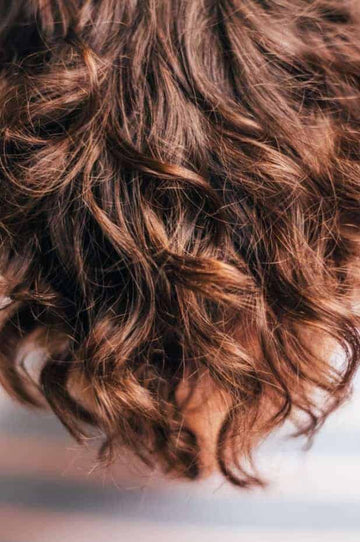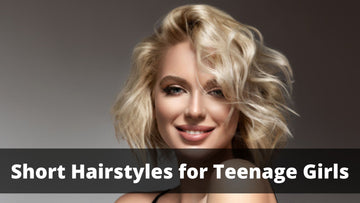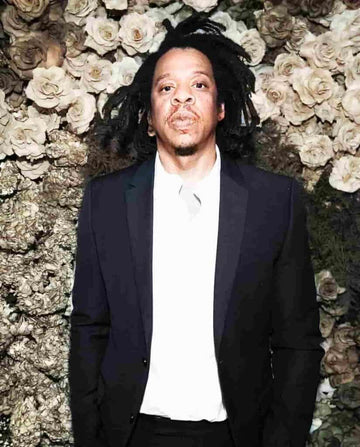It’s possible that your hair is curling for a number of different reasons. Hair loss can be caused by a multitude of factors including genetics, pregnancy, and even hair damage. the inherent curliness of your hair may also play a role in this.
The fact that your hair is damaged is the primary cause of any curling, bending, or flipping that may occur at the ends of your strands. Because they are the oldest and have endured a variety of breakage-causing factors, our hair ends are typically the most damaged.
It’s possible that the ends of your hair are dry, damaged, and split, causing it to definitely curl and flip. Keep reading to learn about all the things that can make the ends of your hair curl, bend, or flip.
Why Does My Hair Curl Upwards at the End
The natural texture of your hair plays a significant role in how it behaves. Curly and wavy hair types are more prone to frizz and curling at the ends due to the way the hair cuticles are structured. the cuticle is the outermost layer of the hair strand, and in curly or wavy hair types, it is more raised and rough. This rough texture makes it easier for the cuticle layer to grab onto moisture and form curls or waves, which can result in the ends of the hair curling upwards.
Another factor that can contribute to upward curling ends is heat styling. When you use hot tools such as straighteners or curling irons, you are exposing your hair to high temperatures that can damage the cuticle layer. This can cause the hair strands to become weaker and more susceptible to curling upwards.
Additionally, hair damage caused by chemical treatments can also contribute to upward curling ends. Harsh chemicals such as relaxers or dye can damage the cuticle layer, causing the hair to become more porous and prone to frizz. This can result in the ends of the hair curling upwards due to the increased moisture retention and rough texture.
The way you care for your hair at home can also affect its behavior. If you use harsh shampoos or skip the conditioner, you are lessening the amount of moisture your hair receives, which can lead to dryness and breakage. When hair is dry and damaged, it is more likely to curl upwards at the ends and form split ends.
Why does my hair curl Outwards at the end?
Here are some of the reasons why your hair might curl at the end outwards:
Genetics
Your hair’s texture and shape can be determined by your genes. They are not the primary reason why your strands end up curled, but they do play a function in the structure of the keratin, and as a result, they add to the overall appearance of your strands.
Weight
The weight of its strands itself is one of the primary factors contributing to the curled ends of your hair. the ends of your mane are the most worn out area of your hair since they have been there the longest.
As a result, they are shorter, thinner, and lighter in weight than the roots and the portion that is in the middle of your mane. Due to the uneven distribution of weight, the ends are more prone to curling as well as lifting.
Length
Another factor that contributes to the formation of bends and curls at the ends of your hair is length, which is especially true for people with straight hair.
You will notice that your hair brushes over your shoulder when it reaches the length it needs to rest at. As a direct result of this, there will definitely be some flips and curls!

Stress
Health, skin, physique, and sleep are just a few of the things that are negatively impacted by stress. When you’re under a lot of pressure, it’s probable that your hair will become damaged in a variety of ways, ranging from something as little as your ends curling up to something as serious as your hair being thinner or falling out entirely.
Hairstyling & Haircare
This is something that should have been obvious to include on the list since we are all aware that the way in which we style our hair can be very damaging to our tresses, particularly if we do it frequently or if we do it incorrectly.
Regular use of heat styling tools, such as straighteners and curling irons, can dry out the hair and cause breakage and split ends.
When hair is lacking moisture, it has a greater propensity to become curly, bend, and break than when it is adequately hydrated.
Hair that has been bleached or dyed can become frizzy, dry, and damaged, all of which are signs of harm. In a similar vein, the way you care for your hair on a regular basis can have a significant effect on the state of your hair.
Hair might lose moisture if you use products that are too drying or that are the wrong kind for your hair type.
To make clear, unhealthy hair, particularly dry and damaged hair, has a much greater propensity to get curled at the ends than does healthy hair. You can prevent split ends and dry, unmanageable curls by ensuring that the products you use contain nourishing and purifying ingredients.
Food & Diet
Your hair is nourished by a diet rich in vitamins, minerals, and healthy foods. When you drastically alter your diet, your hair may not receive the nourishment it needs. This can lead to split ends, thin hair shafts, and less cooperative ends.
Hormonal Changes
The state of your tresses may be an indicator that your body is going through hormonal shifts or an imbalance.
Thyroid conditions, iron deficiency, vitamin D deficiency, and vitamin B12 deficiency are all examples of common hormonal imbalances.
The worst possible outcome is that your hair will thin out, grow more slowly, and start shedding. You might also observe that the ends of your hair appear to move on their own, bending, curling, or flicking out in different directions.
Pregnancy

When a woman is pregnant, her body undergoes substantial changes. Along with the obvious weight gain and growing belly, other physical changes brought on by pregnancy include hair problems.
The texture, length, and growth of your hair are all altered throughout pregnancy. Therefore, if your ends become unruly while you are pregnant, it won’t come as a surprise.
If the issue of curling ends is resolved on its own, the great news is that these alterations are temporary and you can postpone seeking alternative treatments until after birth.
Weather
Skin, hair, and other body components are all greatly influenced by the weather conditions. the change from season to season might cause your hair to curl at the ends.
Hair flips or curls are more common in people who live in areas with a volatile environment than in people who don’t. To be more specific, if the air is dry, your hair will be too.
Split ends can result from a lack of moisture in your hair. Because dry hair curls, even if split ends weren’t caused by bad weather, it’s a safe bet that bad weather will dry out the hair. Humidity, like dry air, impacts hair.
What Can I Do To Prevent My Hair From Curling At the End?

The good news is that you now know what’s causing your hair to curl at the ends. Let’s talk about how to prevent this from happening in the future.
Despite the fact that many of us may be in a hurry to find a fix, the root of the problem is in the way we handle and maintain our hair.
Your hair is dry and damaged, which is the primary cause of the curling that you see at the ends of your strands, as we mentioned earlier.
Keep in mind that maintaining healthy hair is your most effective defense against hair loss. To avoid your hair curling at the ends, there are a few things you may do.
Hair Care
Hair health depends on how we care for it. First, avoid overheating. If you must straighten your hair every day, use a hydrating heat protectant.
You can also use a blow dryer cool air setting to reduce heat damage. Use moisturizing creams when heat styling. Protect hair from direct heat.
Moisturize your hair by using products produced with natural ingredients, such as moisturizing shampoo and conditioners and hair masks. Leave-in conditioners help hydrate your hair. Use products that don’t strip your hair’s natural oils.
Hair Cut
It is possible to solve the problem right away by obtaining a haircut. We realize that this isn’t something that everyone wants to do, but it can help remove dry or damaged ends and revitalize your hair.
This is a certain way to keep your hair in tiptop shape. Once you’ve had your hair cut, be sure to get it cut every 6-8 weeks to keep it looking great.
Use a Silk Pillowcase or Wrap your Hair

Haircare and skincare products sometimes include silk pillows. Choosing a silk pillowcase instead of your usual rough cotton pillowcase might provide your hair a much-needed relief from the static that comes with using a rough cotton pillowcase.
Silk pillowcases reduce the amount of tension that is placed on your hair, which ultimately results in less damage being done to your hair. Alternatively, you can put your hair in a protective style or wrap it up.
In addition to preventing hair from tangling and risking damage while you sleep, this also encourages your hair to maintain the style you’ve just placed it in. Your ends should be straight as well, as long as you have straightened this piece of it.
Get Help from a Professional
Visit a hairdresser if you’ve tried everything else and your hair still curls up at the ends. Depending on the type, color, or texture of your hair, these stylists can provide you with recommendations that are specifically tailored to your own look.
Professional-grade products can be provided to guarantee that you are using the greatest treatments to protect your hair from damage.
In addition, they are able to provide you with guidance regarding the frequency with which you should trim or deep condition your hair in order to keep your hair in good health.
Conclusion
Many factors might cause hair to curl at the ends, from genetics to a change in one’s diet.
However, with the help of this essay and the method of elimination, we are confident that you will be able to identify the primary offender.
Curled ends can be prevented and corrected by keeping an eye on the health of your hair. You can remove them and restore your hair by giving your hair a fresh cut, if you’d like.





